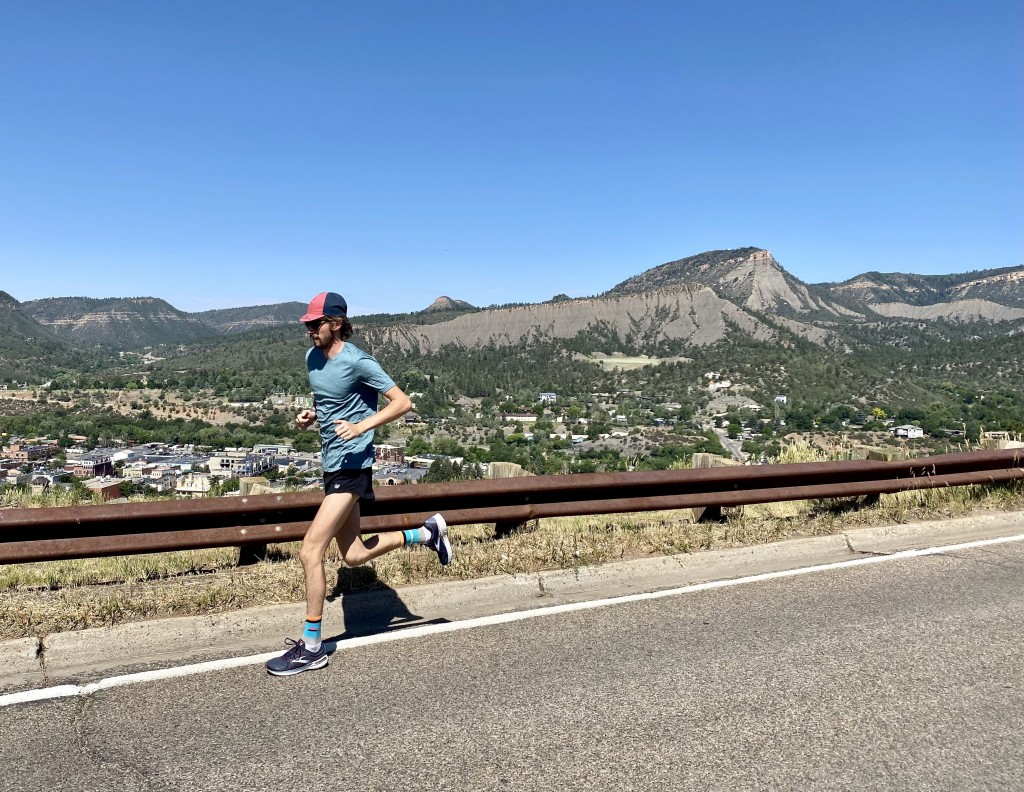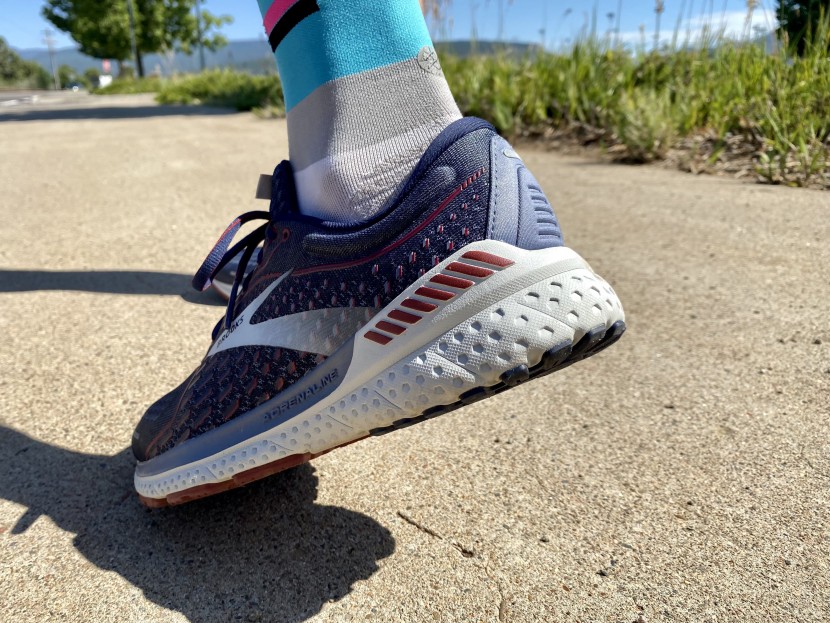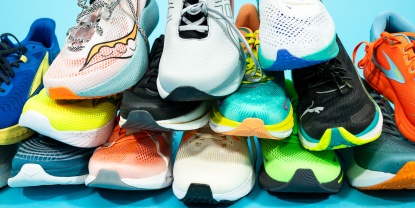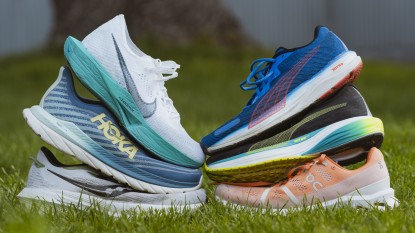Brooks Adrenaline GTS 21 Review
Our Verdict
Our Analysis and Test Results
The Brooks Adrenaline GTS 21 follows a traditional design that puts stability and support at the top of its priority list. The GuideRails support provides a planted and stable feel, which is transferred throughout your legs. This support helps each footstrike feel precise and solid, and this is felt mostly through the heel, leaving your forefoot to have a bit more flexibility.
While not the lightest running shoe on the market, Brooks has done a great job keeping the weight down despite the durable materials in the comfortable upper and outsole. The upper design uses a thicker fabric that we loved for its plushness but was not as breathable as some of the other models we tested. Luckily the fit is dialed and snug, which is essential to take advantage of the support and stability features.
Performance Comparison
Cushioning and Landing Comfort
The Adrenaline maintains the priority of support and stability by using moderate cushioning. The higher-density foam keeps the rigidity up and allows your foot to be laterally stiff through the heel. We were pleased with the balance of cushioning and landing comfort, as footstrikes felt well absorbed but not overly plush. Due to a more durable outsole, this performed better than others on natural surfaces.
With the 12-millimeter heel-to-toe drop, your heel feels more engaged than models with less drop. Some may like this engagement, but others could find it somewhat constricting and overly compensating. We think users that put a high priority on stability will find the cushioning both supportive and responsive. This is a shoe we feel excels for long runs and all-around use. It offers dependable support even when fatigue sets in, plus it allows the starting miles to feel responsive and fresh.
Responsiveness
This model has a great responsive feel that's lively but not overly harsh. The 12-millimeter drop allows less stress through the lower leg, but some could find this overly compensates and doesn't use the full advantage of the Achilles and lower calves, which help spring you forward into an aggressive position. This design feels best on long runs and extended efforts.
While not as responsive as some other models found in the review, such as the Saucony Kinvara 12, we are impressed with the ability of this shoe to be quick, stable, and comfortable. There is a subtle compression under the forefoot while the heel and midfoot feel solid and stable. This compression feels well returned when pushing off. We would not hesitate to recommend this model to those looking for higher stability but still want a shoe that feels quick and powerful.
Upper Comfort
A thin knit upper, which is seamless except for the tongue, is well supported and keeps your foot snug. The toe-box is average width which allows for a natural foot position. There is little compression around the toes, and the heel cup feels locked in with the upper, not causing any issues with the Achilles. We experienced no hot spots or blisters. There is moderate arch support that works well with the stretch laces and thicker tongue, which we normally don't prefer, but we quite liked this model.
The upper is breathable and comfortable even when wet. Additional padding is found below the ankle bone, which hopes to prevent any heel strike on the inside leg. While this was not a feature we needed, those that often find themselves scraping their inside leg may find this feature beneficial. The insole is substantial and well-cushioned. Brooks does a great job of creating a lightweight upper that is also durable; this is often one of the weak points of a shoe.
Lateral Stability and Support
By far, the greatest attribute about the Adrenaline is the support and stability. The GuideRail technology provides lateral stiffness through the heel, translating through the lower leg and knees. This works well with the higher density cushion, which also acts well as a stabilizer. The stack height in this model is relatively high, which adds to the supportive feel. Luckily the added support features prevent it from feeling unsteady on natural terrain.
A 12-millimeter heel-to-toe drop helps keep the heel in contact with the ground for longer periods, increasing the feeling of stability. Brooks keeps these higher drop models in their line-up even when the trend is getting towards a smaller drop. We presume this is to maintain the support and stability they are known for. Once fatigue sets in, these features all help continue to make you have a smooth experience even through your longest runs. For some users, these features may feel overkill, but if you desire the feeling of added support, we do not think these shoes will let you down.
Weight
Given the number of features and comfort, we are impressed with the weight of the Adrenaline GTS 21. This shoe recorded 10.34 ounces weight (men's size 9.5) on our scale, and while it's not the lightest model, plenty of heavier all-around trainers don't offer the number of features and comfort found with this model. The weight is increased with the durable upper, rubber outsole, and supportive GuideRail technology. While we would not mind a lighter model with the same features, the weight of this shoe is not something we view as a deal-breaking downside.
Should You Buy the Brooks Adrenaline GTS 21?
This model impressed us with its great value, good durability, and amazing supportive features. With a subtle cushion in conjunction with the supportive GuideRail technology, we think this shoe would work great for those looking for a steady planted feel in their all-around trainer. These shoes are great on longer runs when fatigue sets in, but we wouldn't hesitate to use them on shorter runs.
What Other Running Shoes Should You Consider?
Runners who prefer a more agile and responsive feel should consider a shoe that's a bit lighter, has less heel-to-toe drop, or a smaller overall stack height. The Saucony Kinvara 12 is one of our favorite models for lightweight responsiveness. Otherwise, the Saucony Endorphin Speed 3 is a well-rounded option for various running needs.











